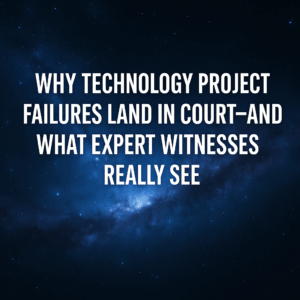Digital transformation has been a buzzword filling industries across various verticals, but it’s misrepresented in what it actually means. Digital transformation is not solely about technology, it also has to do with the mindset of an organization, its people, and its processes. It’s the cohesive, full view of what it means to implement new technology, optimize processes and workflows, and guide people through change – all in one word.
Whether you are preparing for or are already in the midst of a digital transformation, there are a few terms you should know to understand what a digital transformation may entail for your business.
Table of Contents
ToggleHere’s a handy glossary of terms to help you on your journey.
First off, let’s keep in mind that digitization, digitalization, and digital transformation are not the same thing.
- Digitization, as defined by Oxford Language is the conversion of text, pictures, or sound into a digital form that can be processed by a computer. So, think of all those handwritten ledger books turned into digital files.
- Digitalization is defined by Gartner as the process of moving to a digital business; is the use of digital technologies to change a business model and provide new revenue and value-producing opportunities. For example, call center and customer service hub personnel can now access their client’s information in seconds and offer tailored solutions to their needs with just a few clicks on their computers.
- Digital transformation is any sort of technology that optimizes your business and allows you to be more productive, efficient, and effective. It is also a business transformation where an organization is trying to improve its efficiency, provide a better customer experience, be more effective as an organization, or make elements of a job or department easier for the employees.
Enterprise Technology (ERP) vs. Best of Breed systems
ERP or Enterprise Resource Planning is any software that provides broad capabilities and ties together your entire organization. It may include individual systems to manage your finance, human resources (HCM), inventory, supply chain (SEM), and/or your customer relationships (CRM), among others. In other words, it’s one system that houses functionalities that can accommodate various functions of the business, ranging from warehouse management to accounting to customer relations. Best of breed systems are focused on one functionality, such as only warehouse management or only CRM.
Cloud vs. on-premises hosting
These terms refer to how a given technology is deployed. Will it live between your four walls or outside hosted in the cloud* by someone else?
*Cloud hosting is a way of storing, managing, and accessing data and applications over the Internet; it is often seen as more efficient and scalable than on-premises (on-site) solutions.
Configuration vs. customization
- Configuration is about configuring the technology to meet your specific needs, in the context of how the software was built and how it was meant to be used. This is something every business will do as part of their digital transformation.
- Customization is taking the concept of configuration a step further and changing the codes or rewriting software to do something that was not contemplated before, so you can meet a specific need of the business.
Business requirements vs. functional requirements
- Business requirements refer to defining and describing what you need the technology to do and why this is important, based on the business processes and the goals that have been set. These requirements are built early in the process and help guide the transformation process.
- Functional requirements outline how the system must behave to achieve the goals and fulfill the business needs.
Organizational change management vs. internal communications
To create a robust change management strategy, you must leverage two main practices, communications, and training. But change management itself is not limited to these two practices. It also includes how new jobs will be defined, how existing roles are going to change, and how new organizational structures will look, among other things. This is one of the main reasons why many transformations fail – because the organization didn’t adequately address change management, but rather focused too closely on internal communications.

Project governance vs. project management
- Project governance is the overall framework used to manage the digital transformation and to put the right controls in place. It includes the roles and responsibilities, a project timeline, how the resources will be allocated, and how the decision-making process will take place, among other things.
- Project management is about planning, managing, and executing the individual components of the project.
Waterfall vs. agile
These terms refer to the digital transformation’s implementation methodology.
- Waterfall consists of clear and defined sequential steps where the organization defines clear business requirements and moves step-by-steps to the stages of designing, building, testing, training, and go-live.
- Agile is a less sequential methodology focused on rapid deployment, where building and testing happen in real-time to receive feedback from end-users. The learnings are then used to make tweaks on the go.
Integration vs. architecture
- Integration is the way multiple systems need to tie in and talk to one another; it’s the flow of data and processes between multiple systems. For example, a CRM system recording data on sales commissions are most likely connected to the organization’s financial system.
- Architecture is more like a visual representation of what the systems are, where the integration points are and how data is going to flow between those systems. It can also refer to the architecture platform in which a system is built.
Data vs. master data
Data refers to individual transactions, statistics, items of financial information, and any other data that flows through the system.
Master data is non-transactional in nature, it’s the information that defines how you run your business. It includes valuable data shared across an organization such as the financial ledger, product masters, and customer masters.
As you go through your digital transformation journey, don’t be afraid to ask questions and probe deeper into what these acronyms and terms mean for your specific situation. The more informed you are, the better decisions you will make about your business’s future.
If there is anything we can do to help, please don’t hesitate to reach out to us. We want to see your business succeed as much as you do!





